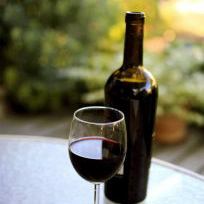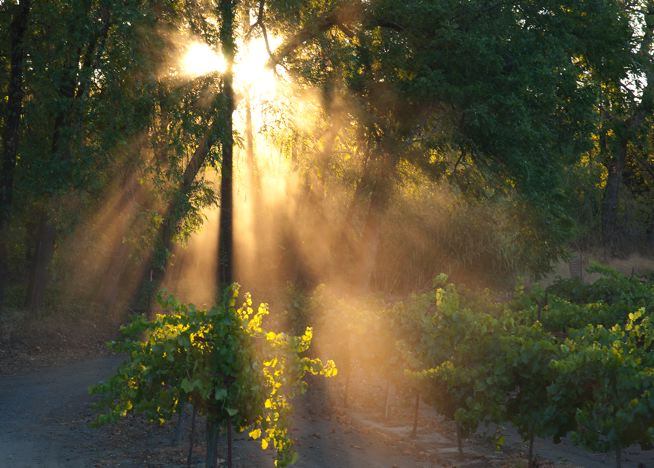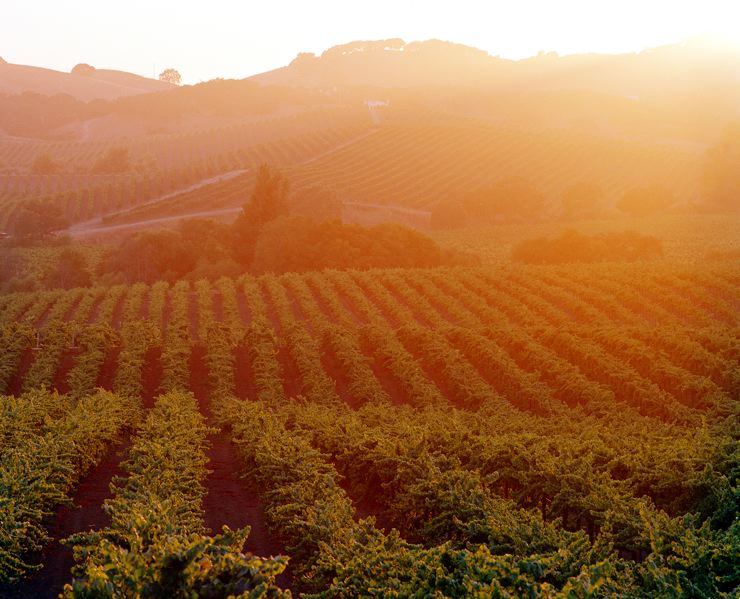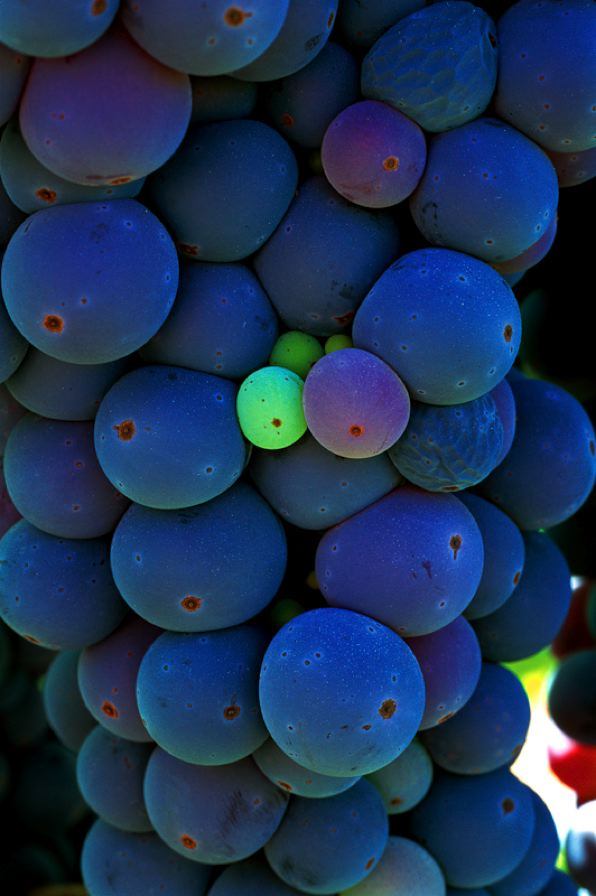 Dear Peter,
Dear Peter,
Feeling very spiritual on my recent journeys through the sun-soaked vines of California Wine Country, I decided to double date a couple of saints, combining St. Clement Vineyards and Chateau St. Jean.
My first lesson is that neither of these is pronounced in the French fashion and Clement, it sorta rhymes with “ciment.”
It’s not that I knew anything about the St. Clement wines, but the winery is very close to Beringer and also occupies a distinctive Victorian home. Since I didn’t have to do the long driveway and hide and seek formulation that many vineyards require, it was easy to park at St. Clement and go up a few steps to the many terraces that surround the home.
 This winery is the antithesis of many in the area—very small, intimate and non-touristy. It’s quite hidden in plain sight. It also comes with a unique story—having been passed along to various physicians in its long history. The most important change of ownership was in 1907 but did not become apparent until the Prohibition Act was passed in 1920. A loophole in the bill allowed doctors to prescribe and sell wine for medicinal purposes, so St. Clement was saved.
This winery is the antithesis of many in the area—very small, intimate and non-touristy. It’s quite hidden in plain sight. It also comes with a unique story—having been passed along to various physicians in its long history. The most important change of ownership was in 1907 but did not become apparent until the Prohibition Act was passed in 1920. A loophole in the bill allowed doctors to prescribe and sell wine for medicinal purposes, so St. Clement was saved.
Being on the property gives you the vantage point of looking out over the valley (ignore those warehouse roof tops over there) as well as the unique chance to see orange groves and olive groves side by side. Most of the wines are in the $80 per bottle price range, although they do have sales in the retail shop. I saw wine marked down to $56!
Explore Napa & Sonoma, California with Suzy:
If you go onto the vineyard’s Web site and click on the “Library” selections, you can see how that $80 bottle will appreciate in the near future. Also note that some bottles are 750 ml (normal bottle size) and some are 1.5 liters (equal to two bottles) … so don’t over-estimate the cost of the wine.
 The winemaker, Danielle Cyrot, was named Winemaker of the Year 2009 and offers my group an important tip. “Judge a vineyard by its whites,” she says. “If you like the whites, you’ll love the reds.”
The winemaker, Danielle Cyrot, was named Winemaker of the Year 2009 and offers my group an important tip. “Judge a vineyard by its whites,” she says. “If you like the whites, you’ll love the reds.”
Indeed, I am not a huge fan of white wine, but my visit to the Presidential Suite at the Fairmont Hotel during my stay in San Francisco featured some crisp white from the St. Jean winery, so I did a pairing of my own and headed over there.
Chateau St. Jean was once so well-known for its white wines that at one time they did not even make reds; now they have a basket full of varietals and I was able to sign up for a blending class. Chateau St. Jean also received a number of votes in the “best of” sweepstakes, although neither vineyard tells you who did the voting or the naming.
Don’t miss more gorgeous photos of wine county in Vineyards of Sonoma County, a gallery by Andy Katz.
 Chateau St. Jean makes a total of 35 different wines; only about 10 are distributed beyond the vineyard and the wine club members. The Welcome Center has a huge tasting bar and one of the best gift shops in the area—as well as a deli counter where you can buy sandwiches and picnics.
Chateau St. Jean makes a total of 35 different wines; only about 10 are distributed beyond the vineyard and the wine club members. The Welcome Center has a huge tasting bar and one of the best gift shops in the area—as well as a deli counter where you can buy sandwiches and picnics.
The house itself was once the summer house of a steel magnate and his family. It’s created in a French Norman style with a touch of a Loire Valley chateau in the turret. There are extensive grounds and gardens; people often come for the day to walk, talk and eat.
The blending seminar is based on the fact that among the most famous of the house blends is a label called Cinq Cepages, the five blends, which has a Cabernet base. In class, you sit at a place with six glasses in front of you and a seventh, empty, glass to your side along with a beaker and pipette.
Most of the people in my class were artfully working their fingers and lips on the pipette to get small percentages in their mix, knowing that they should not have more than 4 percent Malbec in a Cabernet Sauvignon.
Me? I dumped half the glass of Malbec into the glass of Merlot and named my concoction “Merbec.” It might not be a cab, but it tastes fine to me. Note that the law in California states that for a wine to bear the name of a specific grape (i.e. Cabernet) it must comprise at least 75 percent of the total blend.
The Cinq Cepage blending seminar costs $75 per person and takes two hours. You’ll want to plan another two hours in the gift shop. This is better than a day of wine and roses.
Blended kisses with 75 percent real juice,
SuzyKG
By Suzy Gershman for PeterGreenberg.com. Visit Suzy on the Web at www.suzygershman.com, and check out more of her “Bottle Blogs” at www.borntoshoplady.blogspot.com.
- Suzy’s Bottle Blog, Pt. 1: Napa Wine Train
- Suzy’s Bottle Blog, Pt. 2: Cutie-Pie Napa
- Bottle Blogs, Pt. 3: Sonoma County’s Rodney Strong
- Bottle Blogs, Pt. 4: Napa’s Jordan Vineyards & Winery
- Bottle Blogs, Pt. 5: Cakebread Cellars
- Bottle Blogs, Pt. 6: Beringer Wines
- Suzy’s Postcard from San Francisco, California
- Suzy’s Postcard from Santa Barbara, California
- Suzy’s Roadtrip from San Antonio to San Francisco
- Suzy’s Postcard from El Paso, Texas
- Suzy’s Adventures in Las Vegas












